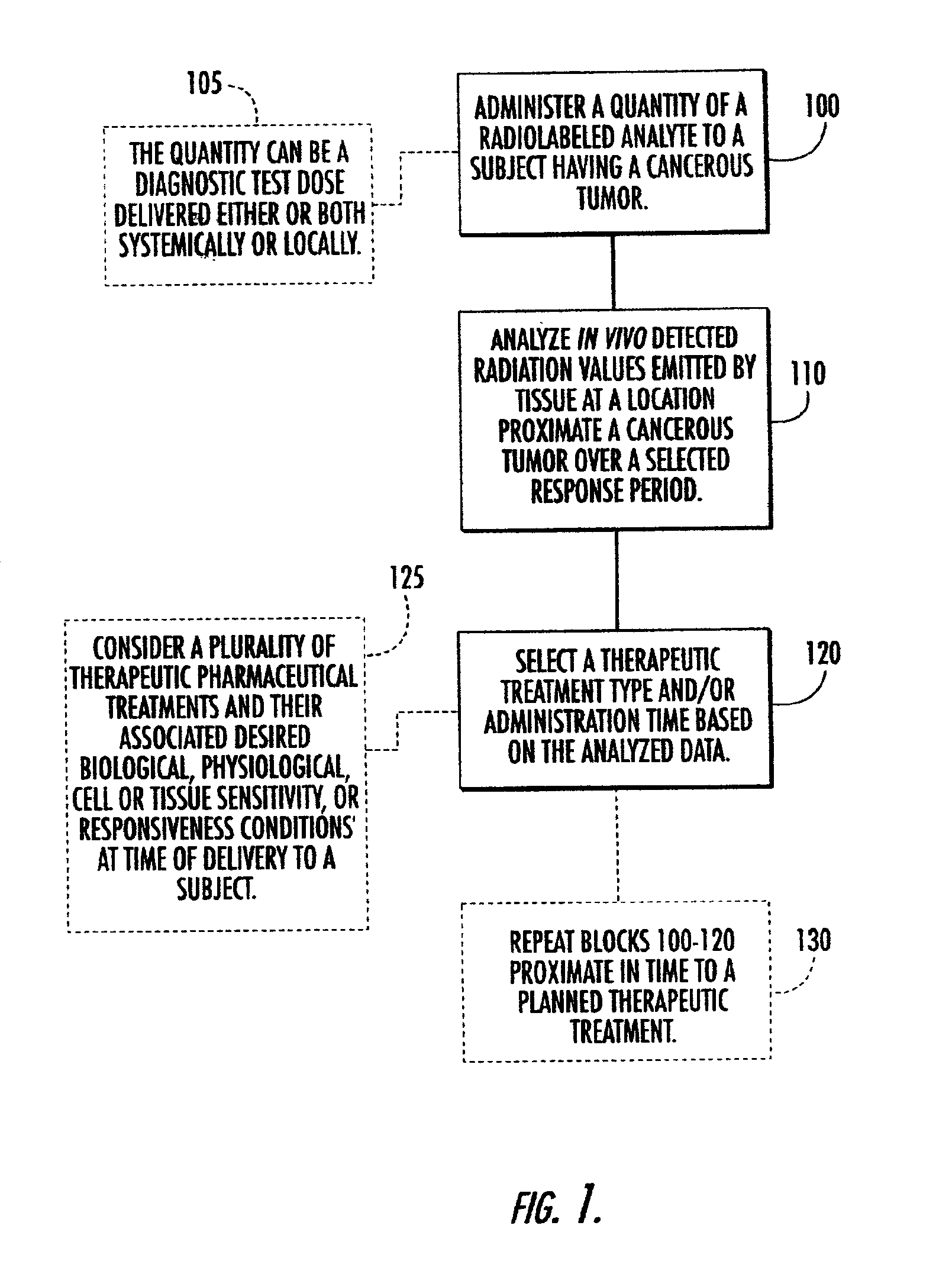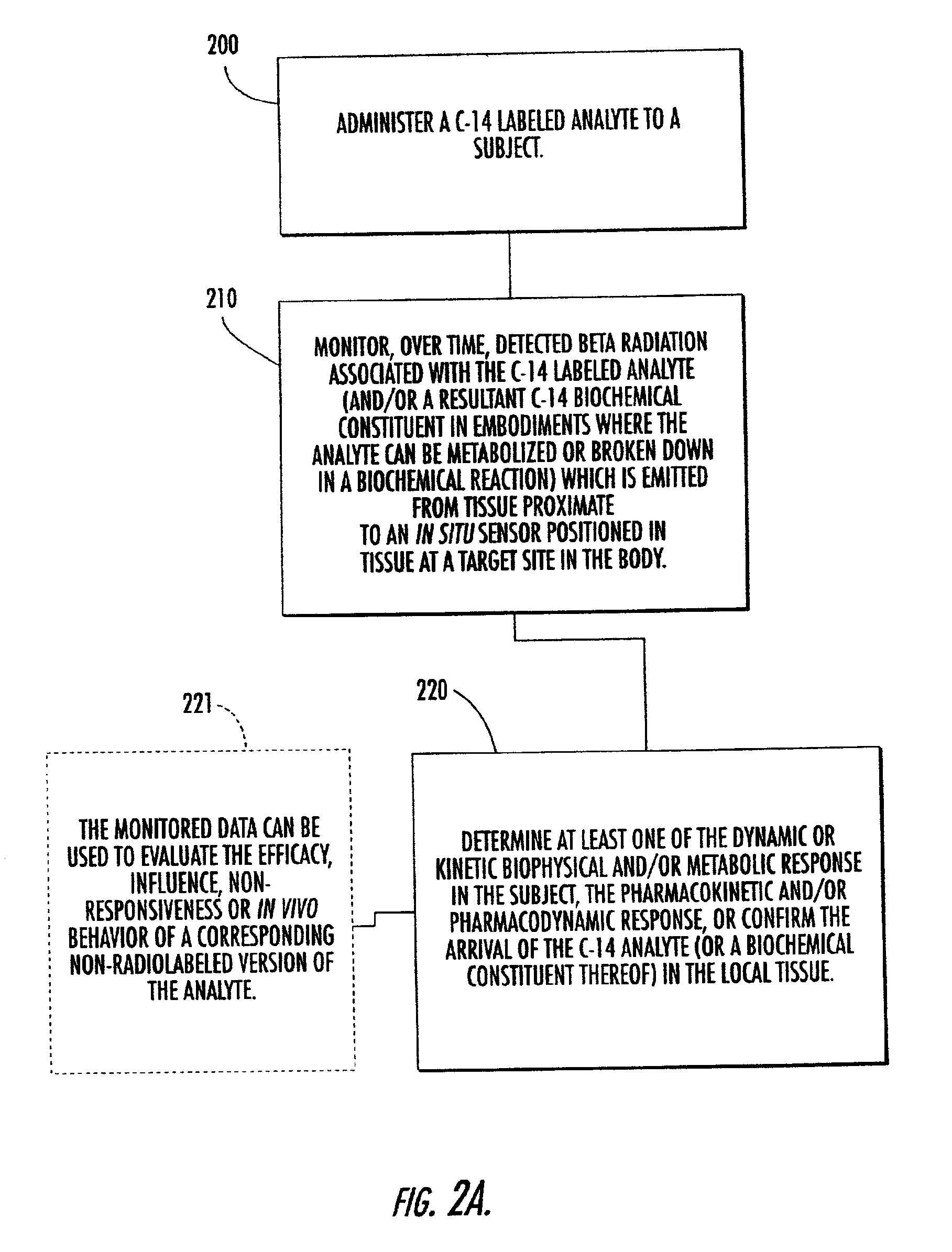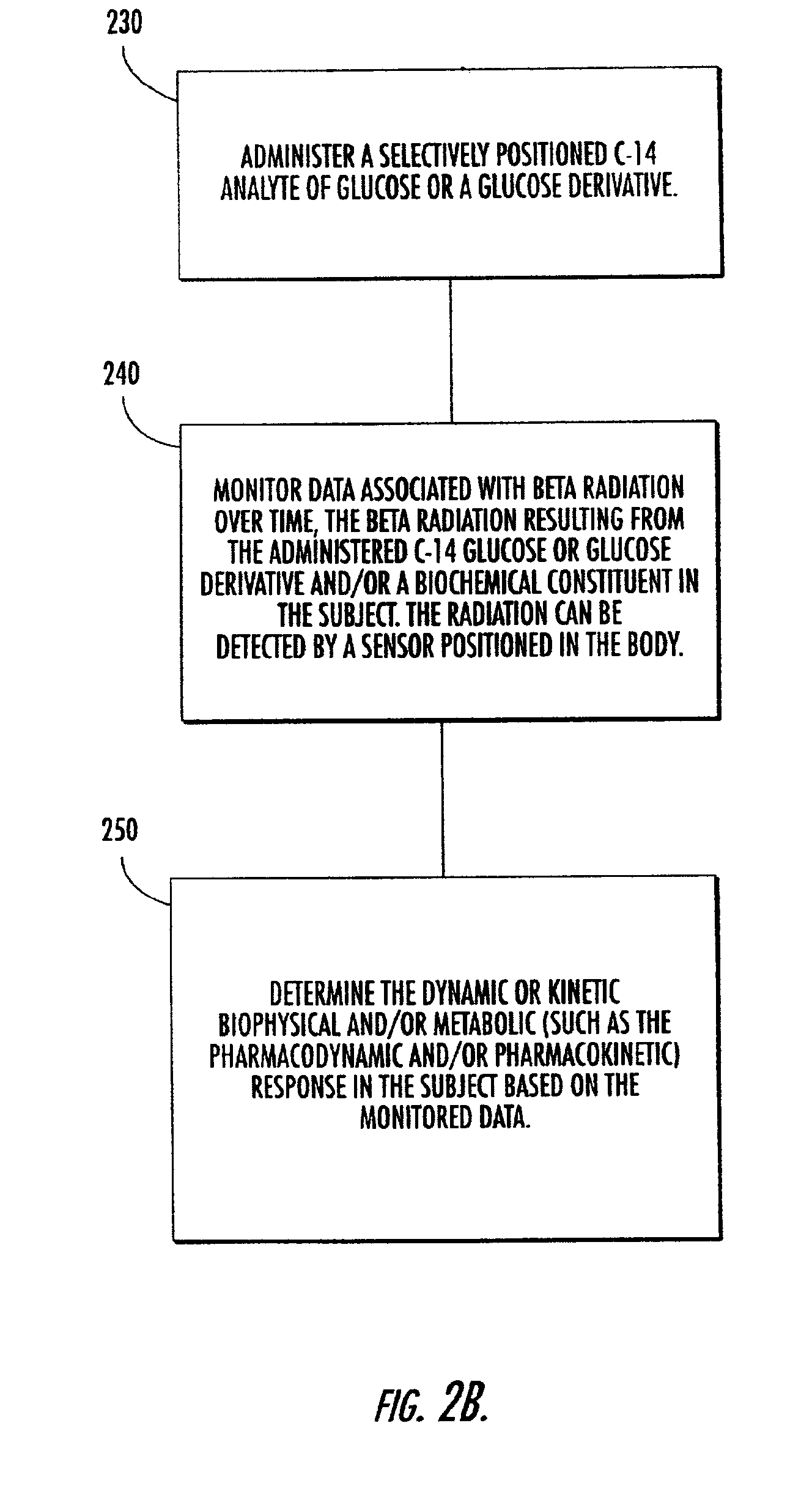Systems, methods and devices for in vivo monitoring of a localized response via a radiolabeled analyte in a subject
a localized response and in vivo monitoring technology, applied in the field of systems and methods for monitoring radiation and/or metabolic activity in a subject, can solve the problems of affecting the effect of tumor response, and reducing the possibility of utilizing a particular drug as a second or third line therapy, etc., to achieve the effect of reducing unnecessary ineffective administration of cytotoxic agents, improving tumor response, and cos
- Summary
- Abstract
- Description
- Claims
- Application Information
AI Technical Summary
Benefits of technology
Problems solved by technology
Method used
Image
Examples
examples
[0151]A fiber optic probe suitable for transcutaneous placement was used with a photomultiplier tube for detection of beta radiation from C-14 labeled glucose (available from Amersham Pharmacia Biotech). A commercially available channel multiplier tube (from Perkin Elmer, model C943 P) was used with a small array of scintillating fibers (from Bicron). The fibers were packed loosely into a retaining collet and fixed in place with epoxy (EPO-TEK 301). The sample surface was then polished to remove any residual epoxy from the faces of the fibers. The active area of the fiber bundle was about 0.17 cm2, and typically the active surface is at least about 0.10-1 cm2. The opposite end of the fiber bundle was mated to the surface of the channel multiplier with optical cement. The system was assembled with a power supply, the channel multiplier and the fiber bundle detector.
[0152]The C-14 labeled glucose was used at a concentration of about 50-200 μCi / ml and the tips of the fibers were expose...
PUM
| Property | Measurement | Unit |
|---|---|---|
| time | aaaaa | aaaaa |
| surface area | aaaaa | aaaaa |
| length | aaaaa | aaaaa |
Abstract
Description
Claims
Application Information
 Login to View More
Login to View More - R&D
- Intellectual Property
- Life Sciences
- Materials
- Tech Scout
- Unparalleled Data Quality
- Higher Quality Content
- 60% Fewer Hallucinations
Browse by: Latest US Patents, China's latest patents, Technical Efficacy Thesaurus, Application Domain, Technology Topic, Popular Technical Reports.
© 2025 PatSnap. All rights reserved.Legal|Privacy policy|Modern Slavery Act Transparency Statement|Sitemap|About US| Contact US: help@patsnap.com



